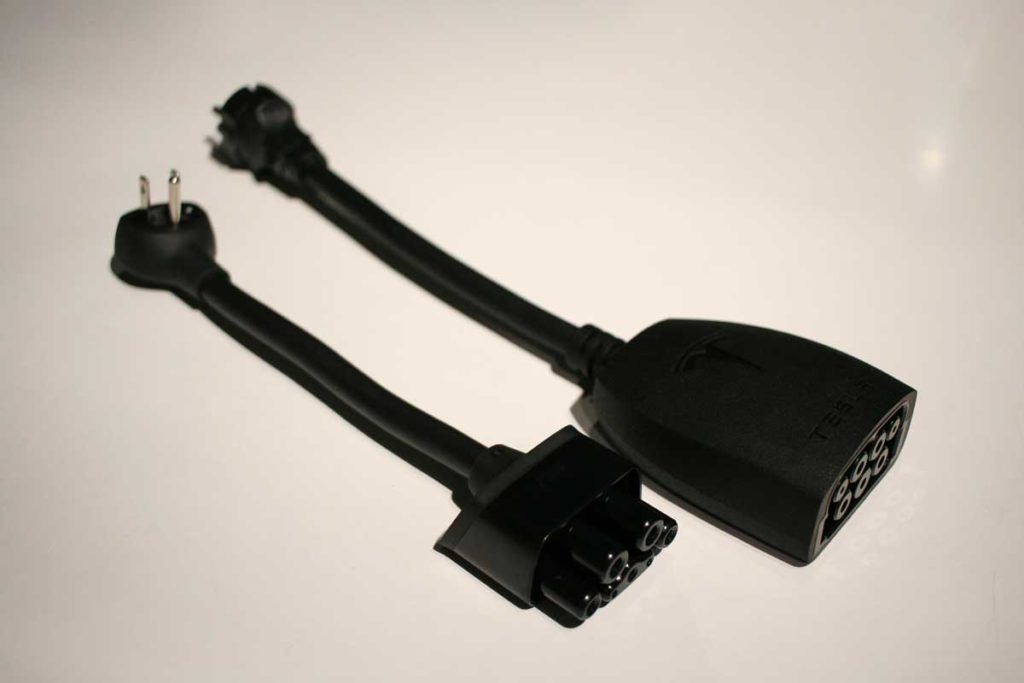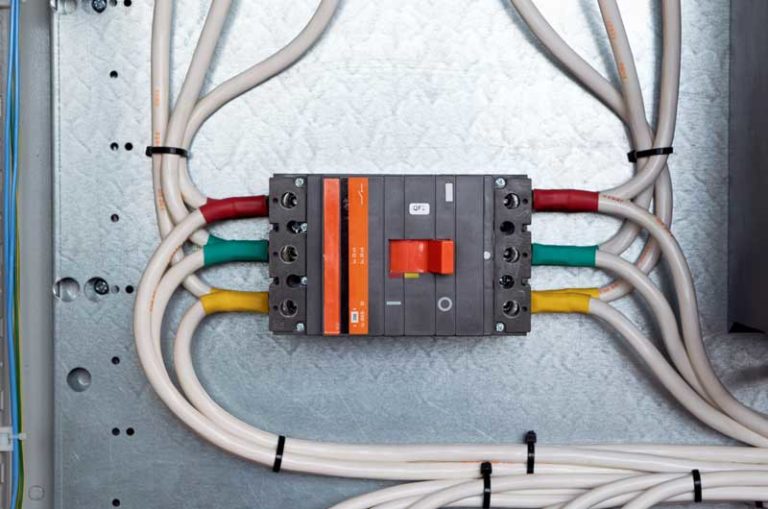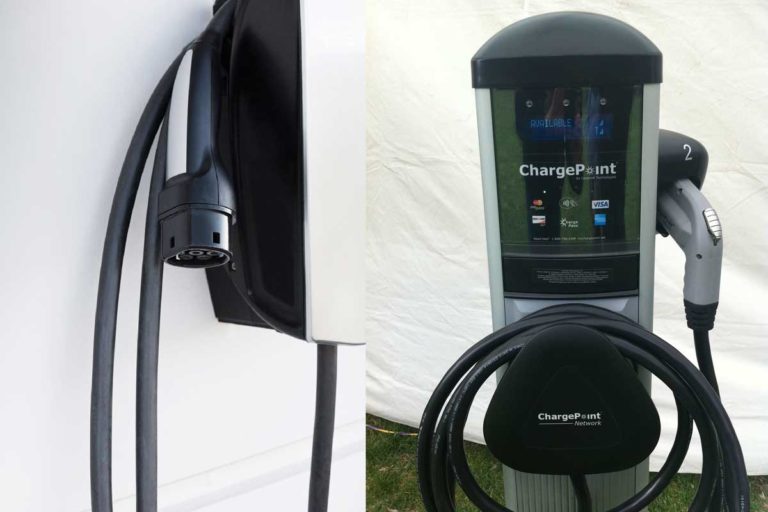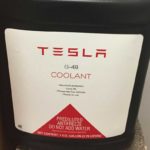Tesla mobile connectors – also known as UMC or Universal Mobile Connectors – are a kind of backup cable that every Tesla owner should have. Since 2018, Tesla has introduced the generation 2 connectors for its vehicles, but do you know how it’s different from the Gen 1 and which one is better?
Gen 2 is better than Gen 1 because it comes with more adaptors, doesn’t overheat, has a plastic handle and sealed control button, creates a more solid connection to the adaptors, and is safer. Besides, Gen 2 is compatible with more models, and unlike Gen 1, it’s readily available to purchase online.
In this article, we’ll take a closer look at the Gen 2 UMC and compare it to the Gen 1 UMC to help you decide which one is the best fit for your Tesla. Get ready to experience the ultimate in Tesla charging convenience and power with the Gen 2 UMC.
- Tesla Mobile Connector Gen 1
- Tesla Mobile Connector Gen 2
- Tesla Mobile Connector Gen 1 vs. Gen 2
- The Verdict: Gen 1 vs. Gen 2 Tesla Mobile Connector
- Why Gen 2 Is The Safer Option
- Compatibility of Tesla Models with the Gen 2 connector
- Charging capabilities between the two connectors
- Automatic Phase Inversion
- Key factors to consider.
Tesla Mobile Connector Gen 1
As the name suggests, Gen 1 was the first generation of Tesla mobile connectors introduced for all Tesla models produced between 2012 and 2017, including Model S and Model X. It allowed the Tesla owners to connect their cars to various outlets, including domestic sockets or campsite power outlets.
However, it’s not prevalent anymore, and with the launch of Gen 2 and even Gen 3 of Tesla mobile connectors, it’s been almost phased out. It’s only used for pre-2018 Model S and Model X Teslas. Let’s take a look at its specifications.

Gen 1 Tesla connector allows 2.3kW-3.7kW of power, but you can increase it up to 11kW with the optional extra 16A 11kW Red commando adaptor p/n 1024110-02-A or 1024110-00-D.
Gen 1 mobile connector comes with a round bag for storage. It also contains a 13A 3-pin plug plus a 32A Blue Commando Socket.
The Gen 1 Tesla mobile connector is rated as IP44, which shows it’s splash-proof. So, it’s safe if you leave it outside unprotected in the rain or if it’s not elevated.
On a somewhat similar note, I also wrote a detailed article about Tesla being able to charge in the rain or not. Check out these helpful hacks and let me know what you think!
Its user manual includes common faults, safety precautions, how to reset, and comprehensive fault codes, among others.
On the back of the Gen 1 mobile connector’s main brick, there’s also a reset button that you can use if it fails. It can be single or three-phased, and its cable is 6 meters or 20 feet in length.
Tesla Mobile Connector Gen 2
The generation 2 Tesla mobile connector comes with all Model 3 Teslas and every Model S and X produced from 2018 onwards. It’s somehow an upgrade of the Gen 1 connector; that’s why they’re very much alike.
However, they have their differences. Let’s see what its characteristics are.
The Gen 2 Tesla mobile connector allows 2.3kW-3.7kW of power as its standard output, but you can increase it up to 7kW with the optional extra 32A 7kW Blue commando adaptor p/n 1104948-00-B.
Its storage bag isn’t circular anymore and is square.
As an added bonus to this article, I’ve created this easy-to-use charging calculator. Simply input your model, charging wattage, and charging percentage, and you will get the estimated time it will take to charge a Tesla in terms of hours. You can play around with numbers a bit just to see how charging time changes:
It also contains a 13A 3-pin plug – previously, it contained a 16A Blue Commando socket, but as of 2021, it’s not included anymore. Gen 2 connector is rated as IP44, indicating it’s splash-proof and can be left unprotected outside.
There’s also a complete list of fault codes in its user manual, containing common faults, and other safety considerations.
Gen 2 doesn’t have a reset button on the backside of its main brick because it simply doesn’t need it.
The Gen 2 mobile connector is single-phase and offers automatic phase inversion. The cable is 20 feet (6 m) in length.
On a somewhat similar note, I also covered the basics on How Many Amps Are Needed To Charge an Electric Car. Check out this informative and link worthy article!
Tesla Mobile Connector Gen 1 vs. Gen 2
Now that we know the specifications of each connector, let’s compare them and see in what ways they’re similar or different.
Similarities
Both have the same standard Tesla connector to plug into the charging outlets to offer more convenience. They also look very similar.
The only difference is that the Gen 1 looks a bit curvier, while the Gen 2 has a sleeker design – it’s a newer generation, after all!
Both connectors have a 20-feet (6 m) cable that seems to be enough for most situations. But if you find it short and can’t extend it, rethinking how you park your car may be helpful.
They also come with a J1772 connector – or some say, adaptor – which allows you to use all universal chargers and recharge your vehicle safely.
Differences
The first noteworthy difference between the two is their packaging. While Gen 1 comes in a round bag, the Gen 2 packaging is square. It’s only a matter of a better design class.
In Gen 1, the handle features a metal stainless steel replaced with a hard but nice-to-touch kind of plastic in Gen 2. The reason is that some overheating issues were reported in metal handles.
They’re also different regarding the adaptors. While both connectors come with the NEMA 5-15 and NEMA 14-50 adaptors – as of 2019, there’s no NEMA 14-50 included with Gen 2 – their appearance is very different in the two generations.
Gen 1 comes with a power outlet of 40 amps which allows the Model S and X owners to have an onboard charging of 40 or 80 amps with a single or a twin charger option.
So, it maximizes the onboard charging rate and can give you a 29 mph (47 kph) range for Model S and around 25 mph (40 kph) for Model X.
But Gen 2 has a power outlet of only 32 amps to the car because Tesla has decided to lower the average to eliminate the overheating issue. However, it perfectly matches the Tesla Model 3 onboard charging rate.
The cladding on the Gen 1 connector’s cable is thicker than Gen 2, but both are the same length. Despite its relative thinness – which is due to lower amps and weight – Tesla promises it’ll work for at least 6 years.
In Gen 1, the distance between the transformer and the adaptor is about 11 inches (28 cm), while in Gen 2, this distance is only around 7 inches (18 cm) which allows you to see the status indicator on its backside.
Gen 1 has a NEMA 4x rating, but Gen 2 has a NEMA 3r Rating, which isn’t a big difference.
NEMA is a standard rating system defined by The National Electrical Manufacturer Association (NEMA), which shows how an electrical enclosure can withstand different environmental conditions.
Another important difference between the two generations is that Gen 1 comes with limited adaptors, and it has a regular transistor which doesn’t protect it from overheating.
But Gen 2 offers more controllability with the circuit board chip inside the adaptor, which has a temperature sensor and a memory chip.
Here’s a helpful video on Gen 1 and Gen 2 differences:
Here’s a table that summarizes what we mentioned above:
| Gen 1 Tesla Mobile Connector | Gen 2 Tesla Mobile Connector |
| Compatible with pre-2018 Model S and Model X | Compatible with all Model 3s and post-2018 Model S and X |
| 2.3kW-3.7kW of power (up to 11kW with the optional extra 16A 11kW Red commando adaptor) | 2.3kW-3.7kW of power (up to 7kW with the optional extra 32A 7kW Blue commando adaptor) |
| Round storage bag | Square storage bag |
| Comes with a 13A 3-pin plug + 2A Blue Commando Socket | Comes with a 13A 3-pin plug + a 16A Blue Commando socket (not included anymore since 2021) |
| Rated as IP44 | Rated as IP44 |
| single- or three-phased | Single-phase also offers automatic phase inversion |
| 20 feet or 6 meters long cable | 20 feet or 6 meters long cable |
| Reset button | No reset button |
| Thicker cladding | Thinner cladding |
| NEMA 4x rating | NEMA 3r Rating |
| Limited adaptors | More adaptor options |
| Overheating issues | Circuit board chip preventing overheating |
The Verdict: Gen 1 vs. Gen 2 Tesla Mobile Connector
Gen 1 and Gen 2 Tesla mobile connectors are mostly similar, and there’s no significant difference between the two. The only thing that matters is their compatibility and some overheating issues in Gen 1.
While Gen 1 is only offered for all the Pre 2018 Teslas, Gen 2 comes with all Teslas made after 2018, including Model 3, Model X, and Model S. Additionally, Gen 1 has some overheating issues, which are resolved in Gen 2 with the help of a circuit chip.
Another noticeable thing to point out is that the overall connection in Gen 2 is much better and safer than Gen 1.
Besides, the control button in Gen 2 is sealed to prevent water from getting inside.
Why Gen 2 Is The Safer Option
When it comes to electric vehicle charging, safety is of the utmost importance. And when it comes to the Tesla Wall Connector, the Gen 2 option is the safer choice for a few key reasons.
The Gen 2 mobile connector bundle comes with not one, not two, but THREE different adapters: the 14-50 adapter, the 5-15 adapter, and the NEMA 14-50 adapter.
This means that you’ll be able to plug your Tesla into a wider variety of charging outlets than with the Gen 1 mobile connector. And we all know how frustrating it can be to search for a compatible charging outlet when your car’s low on miles of range.
But the adapters aren’t the only safety feature of the Gen 2 Mobile Connector.
The Gen 2 wall charger also has a plastic handle and a sealed control button. This means that you won’t have to worry about the connector overheating, even if you accidentally leave it plugged in for longer than you intended. It also makes it harder to accidentally unplug the connector while it’s in use, which can be a major safety hazard.
Another added bonus of the Gen 2 mobile connector is that it’s compatible with more Tesla Models than the Gen 1 mobile connector. This means that if you’re buying a new Tesla vehicle, you’ll be able to use the Gen 2 mobile connector right out of the box. And if you’re an existing Tesla owner, a Gen 2 mobile connector kit can be purchased and added to your existing Tesla cars.
It’s worth noting that the Gen 2 mobile connector is also available at a lower price point than the Gen 1 mobile connector. This is because the Gen 1 mobile connector is an older product and is not as widely used as the Gen 2 mobile connector, especially with the release of new models and the discontinuation of older models.
Gen 2 mobile connector offers more plug adapters, a plastic handle and sealed control button, automatic phase inversion, and compatibility with more models and it’s more readily available to purchase online, all at a lower price point than the Gen 1 mobile connector. In short, if you’re in the market for a mobile connector, the Gen 2 option is the safer and more versatile choice for your charging needs.
Compatibility of Tesla Models with the Gen 2 connector
The Gen 2 Tesla Mobile Connector is compatible with a variety of Tesla models, including all Model 3 vehicles, as well as Model S and Model X vehicles produced from 2018 onwards.
It is important to note that the Gen 2 connector is not compatible with pre-2018 Model S and Model X vehicles, which are compatible with the Gen 1 connector.
Before purchasing a Gen 2 Mobile Connector, it is essential to check the compatibility of your vehicle model and production year to ensure that it will work with your Tesla. This information can be found on the Tesla website or by contacting Tesla customer support.
It’s also worth mentioning that the Gen 2 mobile connector is not compatible with Tesla vehicles that are fitted with a CCS2 connector, as it is only compatible with vehicles with a J1772 connector.
Charging capabilities between the two connectors
When it comes to charging capabilities, both the Gen 1 and Gen 2 Tesla mobile connectors offer slightly different options. It’s important to consider these differences when deciding which connector is best for you.
Gen 1 Connector:
- The standard output of 2.3kW-3.7kW
- Can be increased to 11kW with an optional extra 16A 11kW Red commando adaptor p/n 1024110-02-A or 1024110-00-D
Gen 2 Connector:
- The standard output of 2.3kW-3.7kW
- Can be increased to 7kW with an optional extra 32A 7kW Blue commando adaptor p/n 1104948-00-B
| Gen 1 Connector | Gen 2 Connector | |
|---|---|---|
| Standard Output | 2.3kW-3.7kW | 2.3kW-3.7kW |
| Maximum Charging Speed | 11kW (with optional adaptor) | 7kW (with optional adaptor) |
| Automatic Phase Inversion | No | Yes |
It’s important to note that the maximum charging speed will depend on the power source you are using and your vehicle’s charging capabilities.
The Gen 1 connector can charge at a higher rate, but the Gen 2 connector is still more than adequate for most Tesla owners.
It’s also worth mentioning that the Gen 2 connector is equipped with automatic single phase inversion, which means it can automatically adjust the phase of the current to match the power source, allowing for more efficient charging.
Automatic Phase Inversion
One of the key features of the Gen 2 mobile connector is its ability to automatically adjust the phase of the current to match the power source. This is known as “Automatic Phase Inversion”.
Here’s what that means and how it affects charging:
- Electrical power is supplied in three phases, each phase is offset by 120 degrees from the other.
- Automatic Phase Inversion allows the Gen 2 connector to automatically detect the phase of the power source and adjust the phase of the current accordingly, ensuring that it is matched up to the power source for more efficient charging.
- This feature ensures that the maximum amount of power is delivered to the vehicle, resulting in faster charging times and better overall performance.
It’s important to note that the Gen 1 connector does not have this feature, which could result in slower charging times and less efficient performance.
Gen 2 mobile connector offers Automatic Phase Inversion, which allows it to automatically detect the phase of the power source and adjust the phase of the current accordingly, ensuring that it is matched up to the power source for more efficient charging.
This feature ensures that the maximum amount of power is delivered to the vehicle, resulting in faster charging times and better overall performance.
Key factors to consider.
- Compatibility: Gen 2 mobile connector is compatible with all Model 3 vehicles, and Model S and Model X vehicles produced from 2018 onwards have J1772 connectors. Gen 1 connector is only compatible with pre-2018 Model S and Model X vehicles.
- Charging Capabilities: Gen 1 connector allows standard 2.3kW-3.7kW of power and can charge at 11kW with an optional adaptor. Gen 2 Connector allows standard 2.3kW-3.7kW of power and can charge at 7kW with an optional adaptor.
- Automatic Phase Inversion: Gen 2 connector offers Automatic Phase Inversion, which allows it to automatically detect the phase of the power source and adjust the phase of the current accordingly, ensuring that it is matched up to the power source for more efficient charging.
Based on these factors, the Gen 2 mobile connector is a better choice for most Tesla owners. It is compatible with a wider range of vehicles, offers automatic phase inversion for more efficient charging, and is readily available to purchase online.
However, if you own a pre-2018 Model S or Model X, the Gen 1 connector is the only option available for you.
What is the difference between the Gen 1 and Gen 2 Tesla UMC in terms of charging speed?
Is the Gen 2 UMC compatible with all Tesla models?
Check out these 20 great gift ideas for yourself or a Tesla fanboy.
Contact Us if you have any questions or queries.







